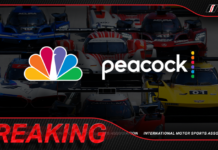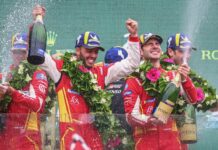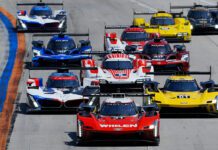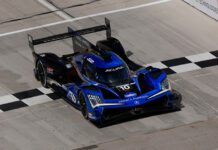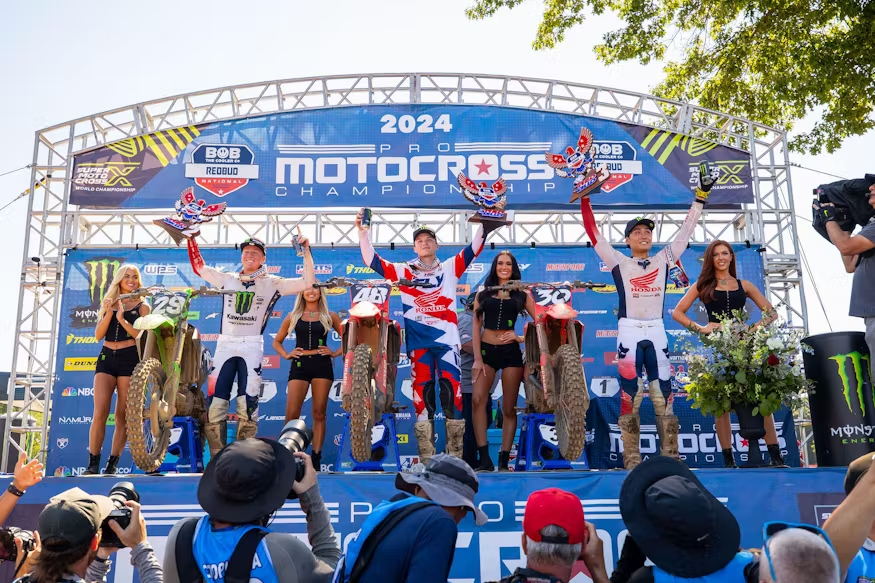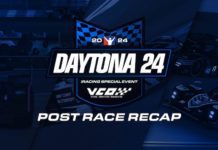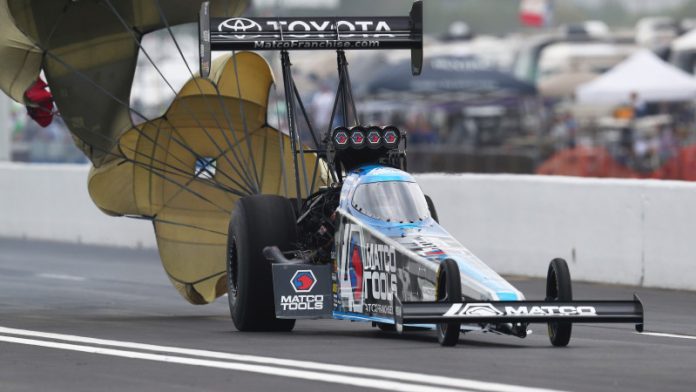While NASCAR prepares to host races without fans due to the current COVID-19 pandemic, the president of the National Hot Rod Association vows to resume drag racing in early June with fans in the stands and pits.
“Our goal is to go back racing with fans,” NHRA president Glen Cromwell said in an exclusive interview with NBC Sports. “We are the most fan-friendly (sport). I think that’s what separates our sport from everybody else, the accessibility and interaction that our sport has. I just don’t see it (racing) happening without fans.
“If there was a model that worked for us and do it without fans, we would of course explore it, but right now we’re putting 100 percent of our efforts behind racing with fans, as soon as we can.”
The timeline for NHRA to return to racing is June 5-7 in Gainesville, Florida, with one of the largest races of the season, the Gatornationals.
The race was originally scheduled for March 12-16, but it and the rest of the NHRA national event schedule was put on hold due to the pandemic.

The NHRA is the largest sanctioning body in drag racing and oversees several racing series, most notably the Mello Yello Drag Racing Series, which is primarily for professional teams and national events, as well as the Lucas Oil Drag Racing Series, which oversees primarily sportsman and amateur racing.
The NHRA plans to follow up the rescheduled Gainesville event with 16 additional races – with several events potentially shortened from four or three days to just two – to make for a 19-race overall season. That would be five short of the usual 24-race schedule that has been in place for several years.
The first two races of the 2020 season — Pomona, California and Phoenix, Arizona — were already completed prior to the coronavirus-related hiatus.
Including Gainesville, the series is slated to run four consecutive weekends: June 12-14 (Houston), June 19-21 (Bristol, Tennessee) and June 25-28 (Norwalk, Ohio).
After a week off, the NHRA schedule is slated to resume again with four more events on consecutive weekends: July 9-12 (Joliet, Illinois), followed by the annual “Western Swing” of July 17-19 (Denver), July 24-26 (Sonoma, California) and July 31-August 2 (Seattle).
Nine other events are planned afterward and through mid-November. One key element of the shortened schedule is that the annual six-race Countdown to the Championship playoffs have been eliminated for this year.
If NHRA is unable to run both Gainesville and Houston if pandemic restrictions prohibit such, those events would be rescheduled in the fall.
“We’re trying to get back to racing ASAP,” Cromwell said. “Our race teams are chomping at the bit to get out there. I talk to them on a daily basis.
“We’re working with state and local officials as well as the CDC (Centers for Disease Control) to make sure that when we do come back, we want to come back in a very responsible and safe way.
“We want to make sure our fans, race teams, sponsors, race tracks, employees, everybody is safe before we get back.”
Although NHRA is expecting to go back racing with fans, it is also monitoring governmental entities and efforts to reopen a variety of businesses in states where the NHRA plans to race.
If some states prevent NHRA from racing, the sanctioning body already has a number of contingency and backup plans ready to be implemented, Cromwell noted.
“Our goal is to put a schedule together that we believe is the most responsible and safe schedule we can,” he said. “If we go to a certain state that does not allow us to race with fans, we’ll have to make a decision at that time on how to address that.”
NHRA is expected to offer an update on its plans on May 4, but for now, Cromwell said the sanctioning body is continuing to move forward on its intention to return to racing.
One aspect that could have a significant impact upon when and where NHRA returns to racing is its Lucas Oil Drag Racing Series, essentially a minor league of sorts for amateur and sportsman racers.
If the LODRS successfully goes forward without significant health repercussions, it would serve as somewhat of a litmus test for the larger Mello Yello Drag Racing Series and its national events to follow.
The first LODRS events – in Tulsa, Oklahoma; Las Vegas and Numidia, Pennsylvania – are scheduled on the same weekend as the planned Gatornationals, and will help NHRA devise a safety and participation baseline going forward.
“(LODRS events) usually have 300 to 500 cars and fans can be 2,000 to 5,000 per day,” Cromwell said. “It would allow us the ability to make sure we’re comfortable (to run national events).
“We’re spending a tremendous amount of time on an NHRA health protection plan that is designed to make sure we are responsible for the race teams, tracks, employees, all the stakeholders, everything from wearing a mask to sanitizing solutions, just making sure everything is very clean and people feel comfortable. That will be a big part of it, making sure everyone feels comfortable coming back to the race track, which we will make sure that happens.”
Some tracks – particularly small, local facilities – are already planning on opening in the next few weeks, Cromwell noted.
On April 15, Bill Bader Jr., owner of Summit Motorsports Park in Norwalk, Ohio, announced he was opening the facility immediately for amateur and sportsman racers in the northern Ohio area, only to walk back those comments last weekend.
Cromwell admits that NHRA is looking at a variety of alternate schedules if the pandemic continues to keep states essentially closed.
“Whether it’s 19 or 17 or 16 (races that eventually are run), we’re looking at everything,” he said. “As you get later into the year, the weekends get tighter. We think it’s important to make sure whatever we do, we keep the integrity of the championship in place, which we think we need quite a few events to make that happen.
“We’re also looking at options like two-day races, we’re working with teams on logistics and economics for them. In the past, NHRA has had maybe 3 events in a row. It would not be surprising that we could do 6-8-10-12 events in a row, but we’d have to work with our teams on the logistics and economics of the sport.”
Cromwell said the Glendora, California-based NHRA will not hold national events if fans are not able to attend in-person.
Part of that is simple dynamics:
NASCAR is able to sustain off TV rights revenue it gets from NBC and Fox. Conversely, the NHRA doesn’t have that type of revenue stream and the operational costs of revenue-driven events without paying fans would be too financially prohibitive.
Which leads to a conundrum of sorts, given that NHRA is arguably the most liberal major professional sport when it comes to allowing fans unfettered access.
That access particularly includes crowds of fans that cluster around race teams in the pits, with some of the most popular teams like John Force drawing crowds sometimes of 100 or more fans at a time shoulder to shoulder, eager to get a look at what’s going on or getting driver autographs.
Dr. Anthony S. Fauci, head of President Trump’s coronavirus task force, spoke Wednesday with the New York Times on sports leagues in general contemplating going back to competition with and without fans.
“If you can do that, it isn’t completely free of risk, but you diminish the risk substantially,” Fauci told The Times. “The density of the infection in the community will dictate the degree to which you can loosen up.
“I’ve said that many times, and I’m quoted as saying that the virus decides how quickly you’re going to get back to normal. You can try and influence the virus by your mitigation programs, but at the end of the day, you’ve got to get the virus under some sort of control before you start resuming normal activity.”
With social distancing one of the most significant ways to keep the virus at bay, NHRA is already looking at various ways to still give fans access, particularly in the pits, yet potentially in a more controlled manner.
“If we’re going to do events with fans, we have to give our fans the ability to touch our sport the way they have,” Cromwell said. “To limit them, to close the pits, that is part of the value and excitement of what makes us different.
“That’s what’s appealing of coming to a Mello Yello Drag Racing Series event: meet the stars, see the crew guys work on the cars. To really take that away, I think, would be a disservice to the fans. It’s important we get them in those locations in a safe manner and take all the health protection we can put out there to make sure they’re safe.
“It’s going to be a phased-in program, a slow process. … We want to make sure fans feel comfortable around other people.”











